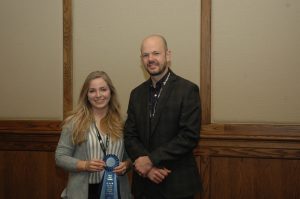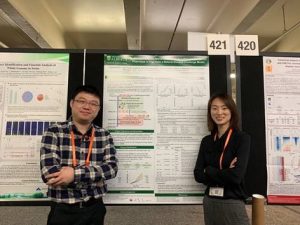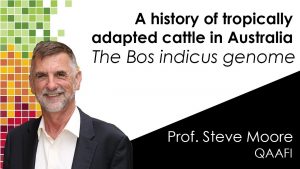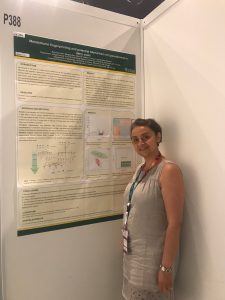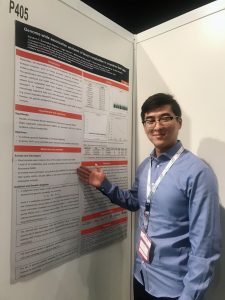“The initial learning curve is pretty steep when you get to industry,” says Austin Putz, a newly-hired geneticist at Hypor (a Hendrix Genetics company). “And the difference in work cultures between academia and industry is pretty different, too.”
One of the differences he found is that, the pressure in academia is to focus knowledge on a deep dive of one issue, whereas in industry, a broader knowledge base is more useful. Austin did his PhD in Animal Breeding and Genetics under Jack Dekkers at Iowa State, where he contributed to Gentec-associated professor Mike Dyck’s Genome Canada project on resilience to disease in commercial pigs. The Gentec project gave him an opportunity to advance his learning in disease resilience and wean-to-finish data. Grants like these combine different strengths from different universities and allow interaction with industry benefit all parties. Austin’s interaction with other universities and industry partners led him to his current position with Hypor.
At Hypor, Austin manages many projects. His knowledge base has to cover mortality, heat stress, cross-breeding, genotyping, breed composition, bioinformatics and more, which he didn’t touch in his studies. The biggest difference, however, was databases; which Austin believes is the biggest gap between academia and industry.
“We’re well trained in many technical aspects but, in industry, we handle much larger datasets,” he says. “Some students still use Excel. That just won’t handle the high-level programming for data science and statistics, like R and Julia!”
One of the reasons for the larger datasets is that, unlike academia, where there’s a finite period of data collection before the student writes a thesis, in industry, you keep on going, making data management much harder to handle. This became an issue when Austin realized he had to adapt quickly to the structure of the databases to pull data from these complex systems. He also had to investigate SQL querying himself, on the job, and tackle Oracle Business Intelligence.
“As a student, I just wasn’t aware of the volume of data,” he says. “Some training through the Computer Sciences department would have been immensely helpful. Databases are by far the biggest challenge of on-the-job learning.”
The challenge goes as far as sharing documents and data with partners, where terminology such as EDI and APIare bandied about casually. It took Austin “many YouTube videos” to figure out the difference between the two, and what makes them night-and-day different to database people. (The answer is that older industry pipelines accept EDIs but haven’t moved to the newer, more sophisticated APIs.)
Austin is also an affiliate assistant professor at Iowa State. Through an industry partnership with Hypor, he dedicates 20% of his time to academic affairs in the Animal Breeding Group, where he spends most of his physical time. In this symbiotic relationship, he gains access to university resources, and the university has access to him, industry research and resources—giving Austin the rare ability to see both sides of the coin.
“The industry is slowly getting to the point that only a few large, very competitive companies remain,” he says. “Each company is gaining more resources to do their own research in-house. Hendrix for instance has 10-15 people in its central R&D department plus many PhDs and some engineers, as well as those within Hypor.”
This shows that the relationship with academia is evolving. The companies are turning more to academia for software development and licensing than anything else; for example with Iowa State, Wageningen in the Netherlands, Roslin Institute in the UK, and University of Georgia Athens.
One of the toughest parts about industry is the communication needed at all levels, especially as Hypor is an international company, active in ~35 countries. This can be anything from managing expectations on projects with your direct superior to explaining to producers at the farm level why we ask them to collect data we may not use in everyday genetic evaluations. Technology is a big help.
“There’s a balance between being brief and being long enough to be clear to others,” says Austin. “Learning that balance has taken a lot of time!”

